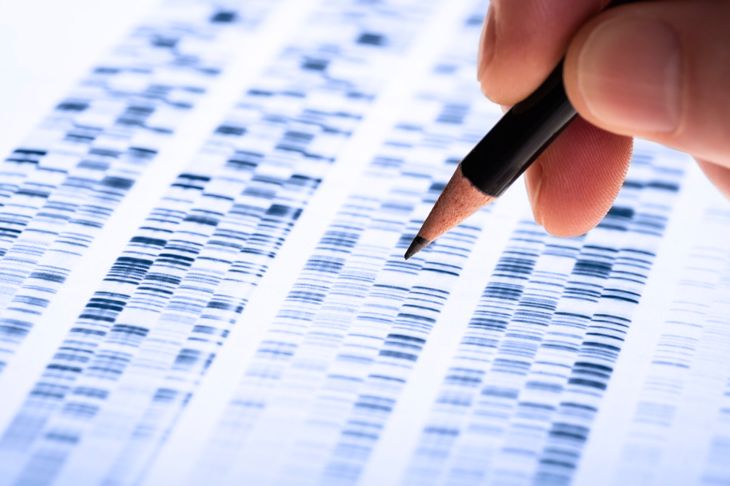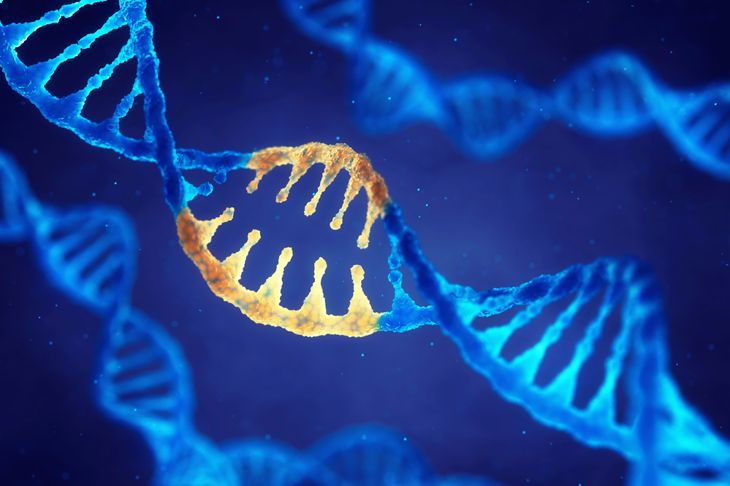Leigh’s disease is a rare neurological disorder characterized by progressive degeneration of motor and mental abilities. This degeneration is due to a decrease in energy available within the body’s cells, although experts still do not fully understand the specific triggering mechanism. What is certain is that in people with Leigh’s disease, body systems eventually degenerate to the point of shutdown. In certain instances, this deadly disease appears in adults, but most cases begin during infancy, usually following exposure to a virus.
Genetic Causes of Leigh’s Disease
Leigh’s disease affects approximately one in every 40,000 newborns. For the disease to present itself, one of at least 26 identified genetic mutations must be present in one of more than 75 genes. These mutations mostly affect a cell’s metabolic features and how they convert energy; they also disrupt the functions of various protein complexes.
Inheritance
In almost all cases of Leigh’s disease, the infant inherits the mutated gene. There are three patterns of inheritance linked to the disease: autosomal recessive, mitochondrial, and X-linked recessive. The location of the associated genetic mutation — whether it is in the nuclear or mitochondrial DNA — provides information about the means of inheritance.
Autosomal Recessive Pattern Inheritance of Leigh’s Disease
An autosomal recessive pattern is the most common form of inheritance. In these instances, both copies of the gene in each cell (egg and sperm) have mutations, meaning both parents carry and pass on a copy of the mutated gene. This type of genetic mutation occurs within the nuclear DNA.
Mitochondrial Pattern Inheritance of Leigh’s Disease
Mitochondrial pattern inheritance of Leigh’s disease occurs in approximately 20% of cases. Because mitochondrial DNA can only move through egg cells and not sperm cells, children can only inherit this mutation from their mothers. According to the National Institute of Health, mutations in at least 11 mitochondrial genes have been found to cause this type of Leigh’s disease.
X-linked Recessive Pattern Inheritance
X-linked recessive pattern inheritance occurs due to a mutated X-chromosome. This inheritance is found more often in males than females, as males have only one X-chromosome so the mutation takes full effect. For a female to inherit this type of the disease, both X-chromosomes must be dysfunctional, which is rare. This genetic mutation occurs within the nuclear DNA.
Neurological Symptoms of Leigh’s Disease
Neurological symptoms of Leigh’s disease usually include noticeable loss of motor skills such as head control, sucking, and talking. Involuntary muscle contractions and problems with movement and balance may also develop. A weakening of the muscles that move the eye and rapid, involuntary eye movements are also symptoms, as is a loss of sensation in the limbs.
Non-Neurological Symptoms
Non-neurological symptoms of Leigh’s disease include vomiting, diarrhea, difficulty swallowing, and seizures, as well as an increase in irritability and loss of appetite. Over time, as the disease progresses, bodily systems such as the respiratory system begin to shut down, resulting in difficulty breathing. The condition can also affect cardiovascular and renal function. Particular physical features related to hormonal activity, such as short stature, are also symptoms.
Diagnosis
If a doctor suspects Leigh’s disease, she will administer a battery of tests to assess a raised lactate presence and nervous system tissue changes. The physician will also examine the brain, usually via magnetic imaging resonance (MRI) or computed tomography (CT) scan, to identify the presence of brain stem diseases and other associated characteristics including the presence of decaying skin cells, usually in the form of lesions, on the brain. New research also suggests testing for mitochondrial dysfunction.
Treatment of Leigh’s Disease
As there is no known cure. treatment for Leigh’s disease focuses on alleviating symptoms. Doctors usually prescribe vitamin B1 and mineral supplements and recommend a specific diet that can help address metabolic issues arising from the disease. Current experiments are testing the efficacy of dichloroacetate to treat lactic acidosis, a common symptom of Leigh’s disease.
Prognosis
Sadly, most people with Leigh’s have a short life expectancy, and usually do not survive past mid-childhood or adolescence. Counseling and support groups for those living with Leigh’s disease, particularly caregivers, are available and doctors will often recommend seeking this professional assistance.

 Home
Home Health
Health Diet & Nutrition
Diet & Nutrition Living Well
Living Well More
More




















